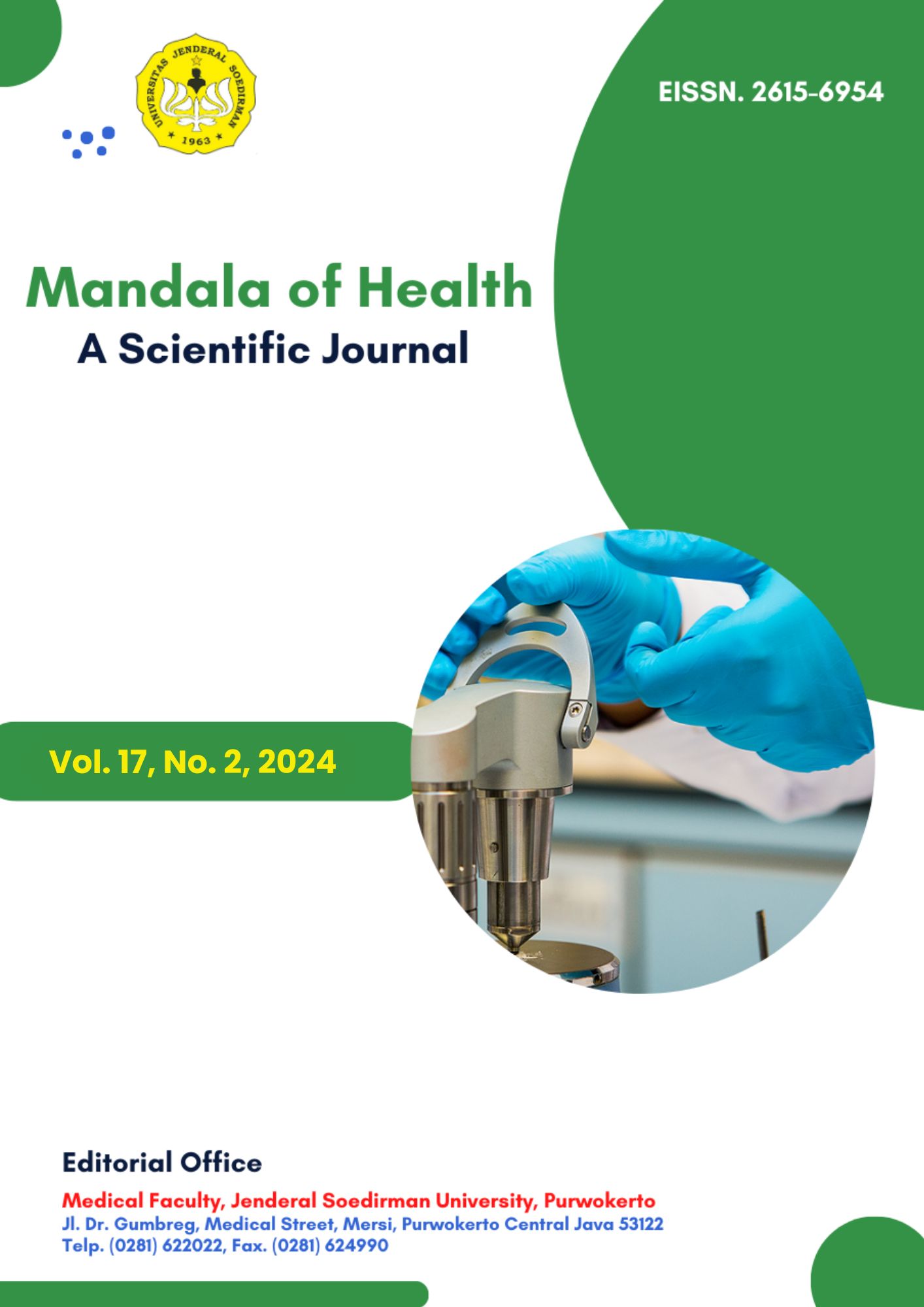ANESTHESIA MANAGEMENT FOR PATIENTS WITH LOW EJECTION FRACTION UNDERGOING CORONARY ARTERY BYPASS GRAFTING (CABG)
Abstract
Background: Coronary Artery Disease (CAD) is a condition caused by the formation of blockages in the coronary blood vessels. The primary non-invasive procedure for CAD patients is Percutaneous Coronary Intervention (PCI). However, complications during PCI, such as unstable hemodynamic arrhythmias, can occur, possibly due to Abrupt Vessel Closure (AVC). This remains a major issue for PCI failure and necessitating Coronary Artery Bypass Grafting (CABG). Case: We report a 68-year-old male patient with CAD and total occlusion of the Right Coronary Artery (RCA) and total occlusion of the Left Circumflex (LCx) who was unable to undergo PCI at a previous hospital. Subsequently, re-catheterization at RSUP Dr. Sardjito, CAD3VD was diagnosed, leading to a planned CABG surgery. The patient’s clinical condition was relatively stable, though he had a low ejection fraction (41%). Induction, invasive monitoring placement, and intubation proceeded smoothly. CABG was performed with three grafts (LIMA-LAD, SVG-OM, SVG-PDA), and successful weaning was achieved with dobutamine support. The patient was in the ICU for 2 days for clinical and hemodynamic optimization before being transferred to the ICCU for further intensive care. Discussion: The main principle of anesthetic management in this case is to maintain a balance between myocardial oxygen supply and demand. Strict monitoring of hemodynamic changes during surgery is essential to guide necessary supportive therapy. Patients with low ejection fractions are at high risk for post-operative mortality and complications. Post-operative management in the ICU focuses on optimizing clinical condition and addressing any emerging potential issues. Conclusion: Surgery for patients with CABG requires complicated and complex anesthetic techniques. This operation requires collaboration and good communication between the surgeon and the anesthesiologist.
References
Benjamin EJ, Blaha MJ, Chiuve SE, et al. Heart disease and stroke statistics-2017 update. A report from theAmerican Heart Association. Circulation. 2017;135(10):e204–228.
Awan NI, Jan A. The effect of ejection fraction on mortality in Coronary Artery Bypass Grafting ( CABG ) patients. 2020; (December):4–9.
Doenst T, Haverich A, Serruys P, Bonow RO, Kappetein P, Falk V, et al. PCI and CABG for Treating Stable Coronary Artery Disease: JACC Review Topic of the Week. J Am Coll Cardiol. 2019;73(8):964–76.
Michael S. Green, Gary Okum, and Jay C. Horrow, Anesthetic Management of Myocardial Revascularization. Hensley’s Practical Approach to Cardiothoracic Anesthesia 6th , 2019. 307-330.
Berkowitz DE. Vascular function: From human physiology to molecular biology. In: Schwinn DA, ed. New Advances inVascular Biology and Molecular Cardiovascular Medicine. Baltimore, MD: Williams & Wilkins; 1998:25–47.
American Society of Anesthesiologists and Society of Cardiovascular Anesthesiologists Task Force on Transesophageal Echocardiography. Practice guidelines for perioperative transesophageal echocardiography. Areport by the American Society of Anesthesiologists and the Society of Cardiovascular Anesthesiologists TaskForce on Transesophageal Echocardiography. Anesthesiology. 2010;112(5):1084–1096.
Gibbs, NM, Et Al. (2019). Management Of Cardiopulmonary Bypass. Dalam : Gravlee GP, Shaw AD, Bartels K. Hensley’s Practical Approach To Cardiothoracic Anesthesia. 6th Edition. Wolters Kluwer : USA. Ch7
Joel K. Kaplan’ S Cardiac Anesthesia For Cardiac And Non-Cardiac Anesthesia.; 2017. Doi:10.1016/B978-0-323-39378 2.00054-4
Allen BS. Myocardial protection: A forgotten modality. Eur J Cardio- thoracic Surg. 2020;57(2):263–70.

This work is licensed under a Creative Commons Attribution-NonCommercial-ShareAlike 4.0 International License.







